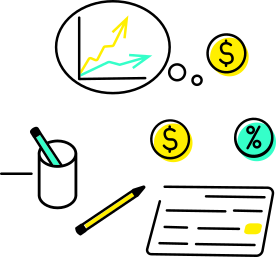WHAT ARE Support and Resistance IN FOREX TRADING?
In Forex trading, support and resistance are essential components of technical analysis. These are the market levels where the price will likely pause and shift direction. In simple terms, a support area can stop declining prices, and traders anticipate that the price of an asset will recover from a support area. Likewise, a resistance area can stop the increasing price, and traders expect an asset’s price to fall from a resistance level.
However, support and resistance levels are not permanent boundaries, and the prices often breach these levels.

Support and Resistance Are Not the Absolute Barriers
Role Reversal

An important thing about support and resistance levels is that when the price breaks through a particular level that acts as either a support or resistance level, it turns the opposite of what it was earlier. For example, if the price was increasing and it broke above a resistance line, that resistance line would then serve as a support line for future price movement. Likewise, If the rising price breaks above a resistance line, that resistance line will then operate as a support level for a future price action.
Why Do Prices Change Direction?
You may be wondering why the prices reverse from these levels. It is because these areas reflect the demand and supply zones, and it is normal for the prices to rise when there is a strong demand and drop lower when there is less demand. So, in other words, support and resistance indicate bullish and bearish market forces. Bulls aim to push the price higher, while bears try to lower the price. This tussle between the bullish and bearish forces triggers two-way price movement with frequent consolidation phases, creating the market’s support and resistance areas.

The Tussle Between The Bulls and Bears Triggers Two Way Price Movement and Causes Price To Consolidate
How To Draw Support & Resistance ?

One of the easiest ways to identify a support or resistance area is by visually analyzing the price charts and drawing the trend lines. The first thing you will do is to spot such an area that has remained intact after repeated price action. Then, you will look for at least two points within that price range and connect them to draw a trend line. It will draw either support or a resistance line. The more points you connect to draw the trend line, the stronger that support or resistance area will be.
You can establish the support and resistance levels in an up-trending, down-trending, or even in a sideways market. A support or resistance line in an uptrend will slope upwards and downwards in a downtrend. Similarly, in a sideways market, the line will be horizontal. You can also draw two parallel lines to form a price channel. The upper line in a price channel generally acts as a resistance line, while the lower line acts as a support line.
Indicators for Support & Resistance
You can also use various technical indicators to find support and resistance areas. For example, when you apply a moving average indicator on a chart, and the moving average line remains below the current price, it acts as a support line. Likewise, if the moving average line remains above the current price, it acts as a resistance line. Similarly, many other technical indicators, such as Bollinger bands, ATR, etc., all indicate the support and resistance levels.
Remember, the support and resistance areas identified using the trend lines are called static support and resistance areas. It’s because these areas do not change with the price movement. On the other hand, support and resistance areas identified using technical indicators are called dynamic areas. It is because these areas will change with the price movement.

Breakout Trading
You can also use the support and resistance areas for breakout trading. You know, whenever the price breaches a support or resistance level, that level becomes the opposite of what it was previously. So if the price breaks above a resistance line, you can place a buy trade and keep your stop-loss below the established support line. Following the same rule, if the price breaches a support line, you can place a sell trade and keep your stop-loss above the newly established resistance line.
The support and resistance levels also help to identify exit levels. For example, if you have a buy position in profit, you can book the profit whenever the price reaches a resistance area. Similarly, if you have a sell position in profit, you can book the profit whenever the price comes near the support line.
